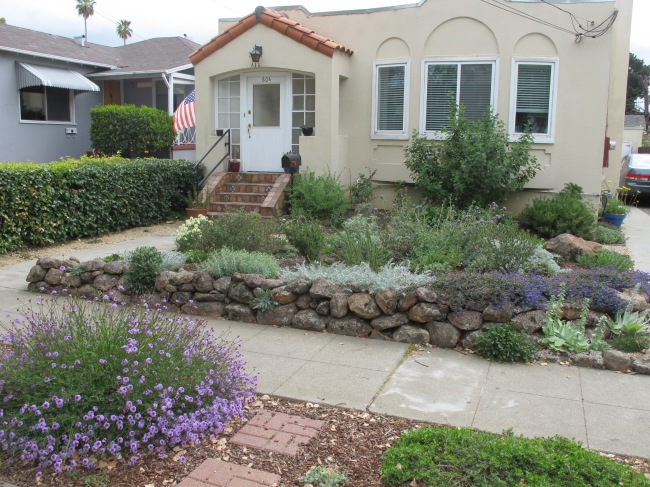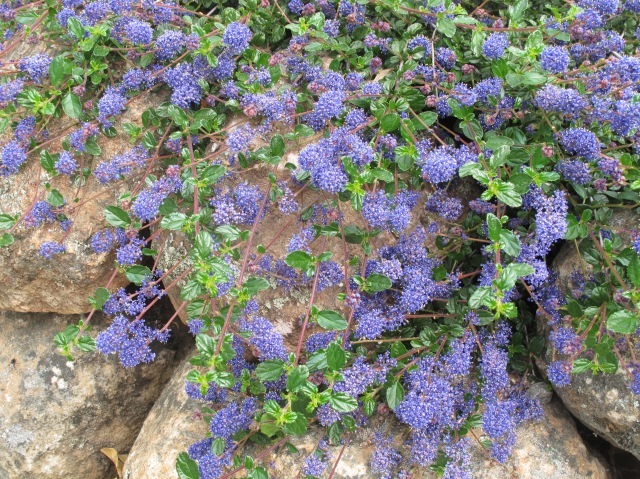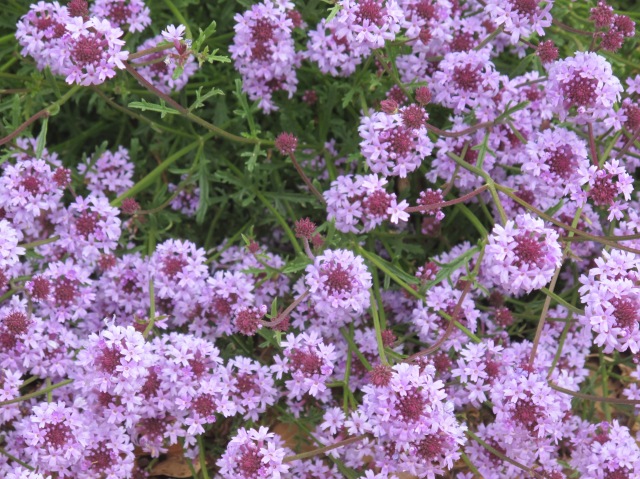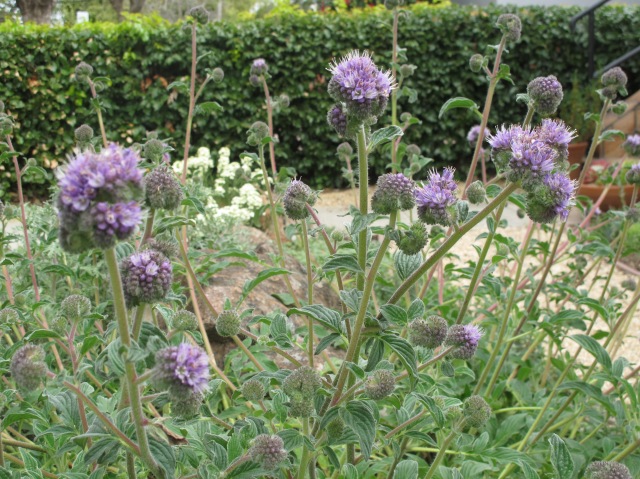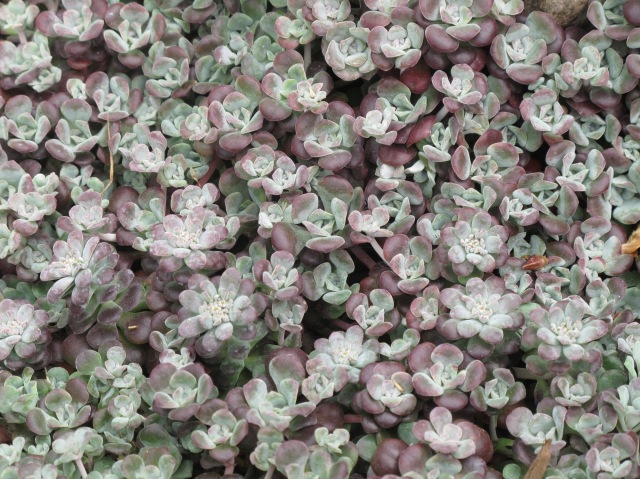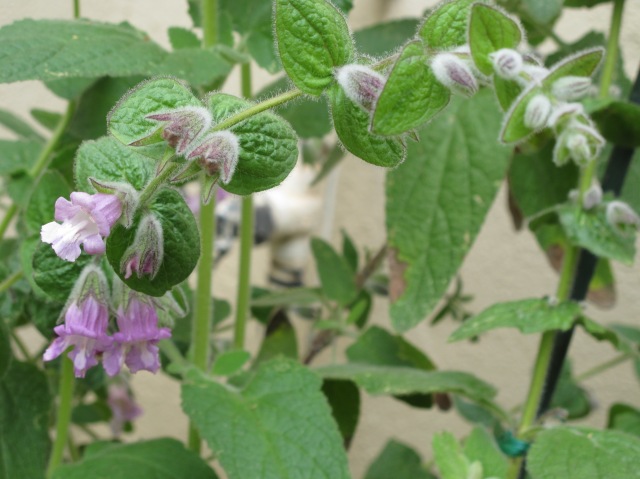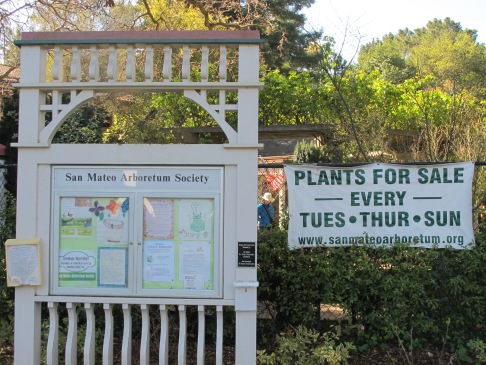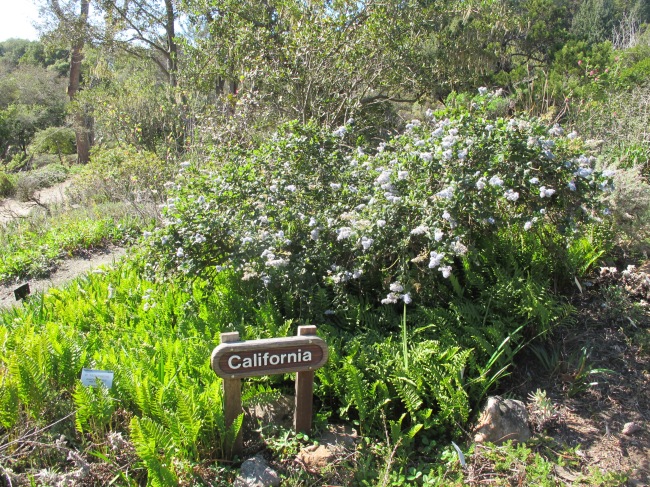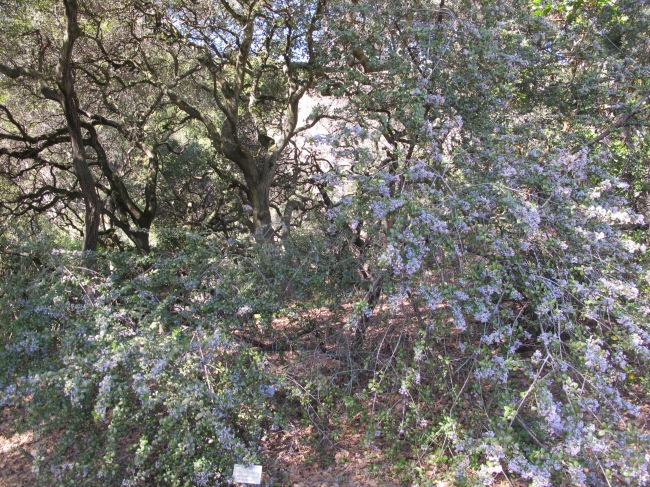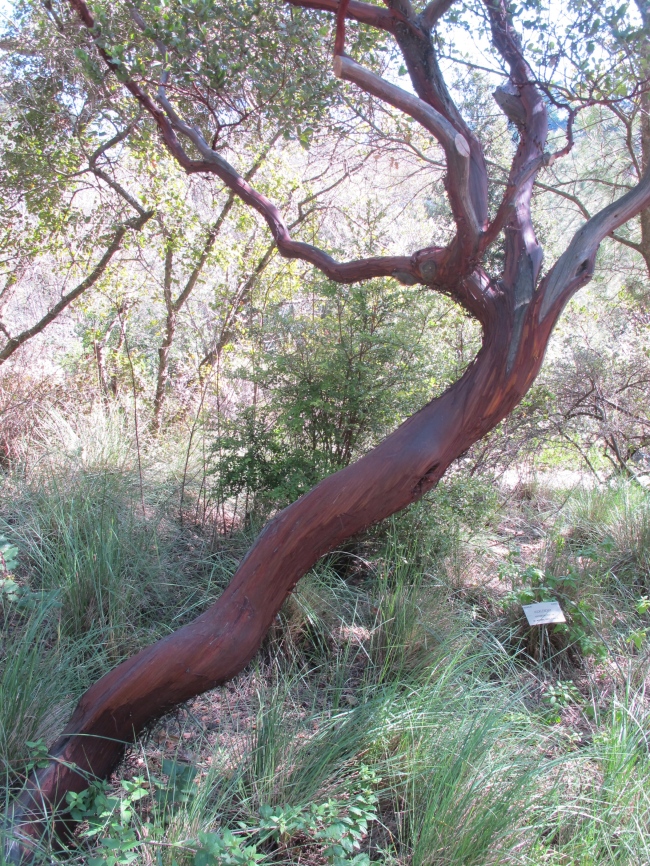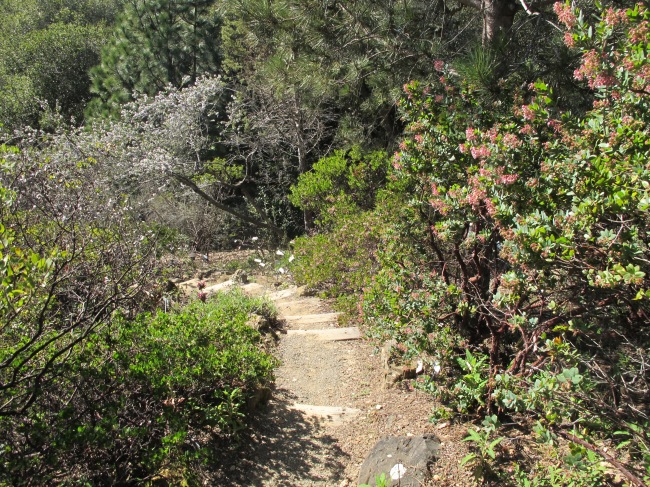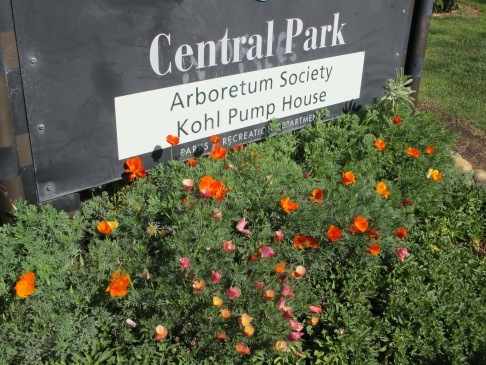 |
| Poppies brighten the sign to the Central Park's 9th Ave entrance |
Just a few blocks from our house in San Mateo sits Central Park, a vast green oasis with a little something for everyone: a renowned Japanese Tea Garden for those seeking tranquility; a beautifully manicured rose garden for the flower fanatics (you know who you are!); a softball field and tennis court for the jocks; a playground for the kiddies; and the ancient Kohl Pump House for the history buffs among us who would like a glimpse at what late 19th century Central San Mateo looked like.
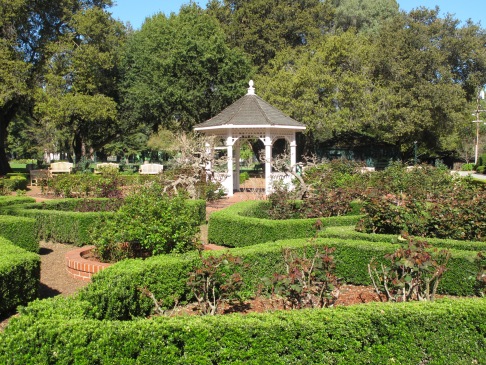 |
| Rose Garden (sans roses) |
On a leisurely stroll through the park one morning last year, I discovered a greenhouse next to the pump house with elderly women busily potting and watering plants. It seemed like an efficient and harmonious operation, and there were hundreds of plants neatly organized on tables . I inquired about native plants and a nice lady showed me to a small table with fifteen or so natives happily basking in the sun. For sale were sedum, penstemons, native roses, hummingbird sage, beach strawberry and sea thrift to name a few. They were reasonably priced at $5/gallon and $3/4" size. Contrast this with Yerba Buena Nursery that charges at least $13 for gallon plants.
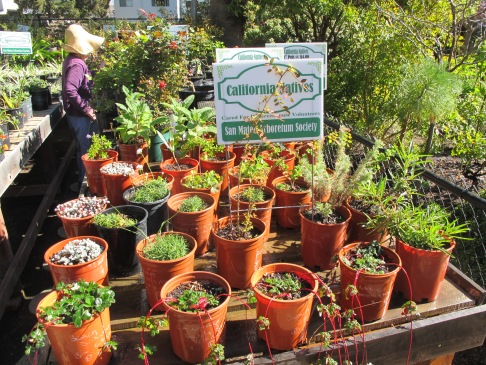 |
| There is a native table at the greenhouse selling plants such as beach strawberry, penstemons and sages |
The volunteer seemed to feed off my enthusiasm for native plants and decided to take me on a tour of the native plantings around Central Park. There is one partly sunny bed located near the Tea Garden that contains a random assortment of buckwheats (Eriogonum), ground cover manzanita (Arctostaphylos), monkeyflowers (Mimulus), seaside daisy (Erigeron), dune tansy (Tanacetum), and a robust canyon sunflower (Venegasia). The plants had only recently been planted and there was some evidence of trampled vegetation, which was difficult to see.
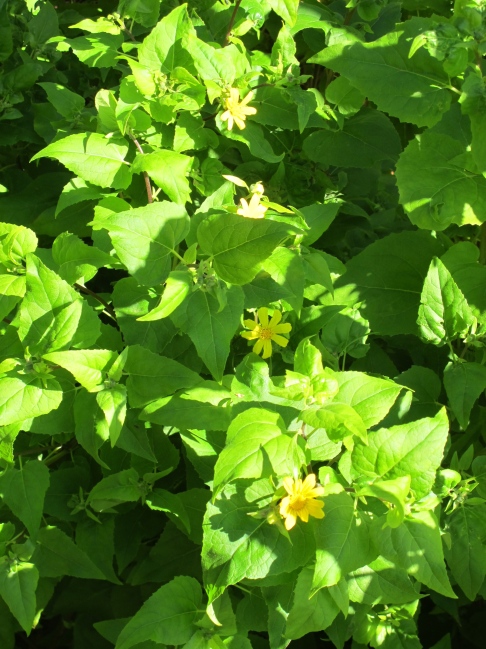 |
| Venegasia Carpesioides - Canyon sunflower |
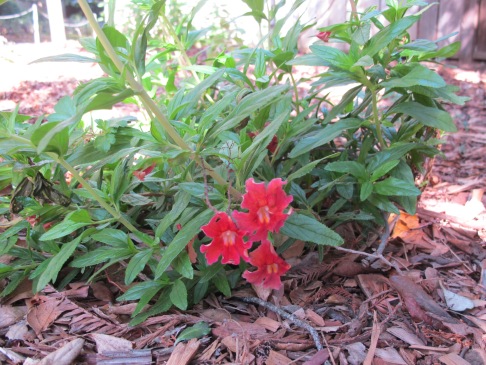 |
| Red-Flowered Mimulus - monkeyflower |
The next stop on our tour was a small bed surrounding an entrance sign to the park. This arrangement featured CA poppies (Eschscholzia), lilac verbena (Verbena), sages (Salvia), matilija poppy (Romneya), and a very cool sundial.
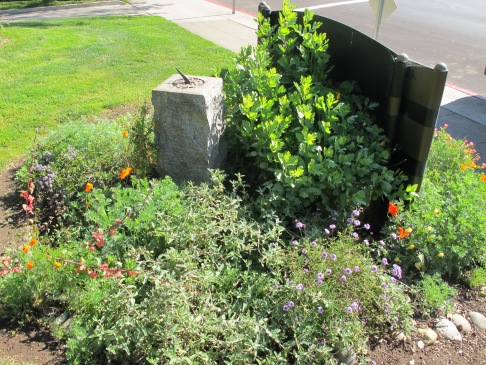 |
| One of two native plant beds in the park. Clearly there is room to expand |
After my tour, I vowed to help expand the native plant table at the greenhouse. Thus far I have donated one round of cuttings but I need to do more. The San Mateo Arboretum Society is a very worthy cause that helps maintain the grounds around the pump house and hosts various garden classes and workshops. In the future I hope to dedicate more time in the greenhouse. If you get a chance, check out their website: sanmateoarboretum.org
